Now, mask factories in European and American countries are facing some pressure: on the one…
How does the antiviral face mask filter the 2019-nCoV? How to judge?
If you were asked to set a uniform standard for the antiviral face masks of the 2019-nCoV, how would you do it? N95, KN95, FFP, flat masks, folding masks, medical masks, medical-surgical masks, 3M masks……. Recently, people all over the world have been focusing on antiviral face masks. However, in the past, masks have established standards for the specific environment in which they are used, and none of them are specific to the transmission of the virus. Today I’ll talk about these doubts in terms of the nature of antiviral.
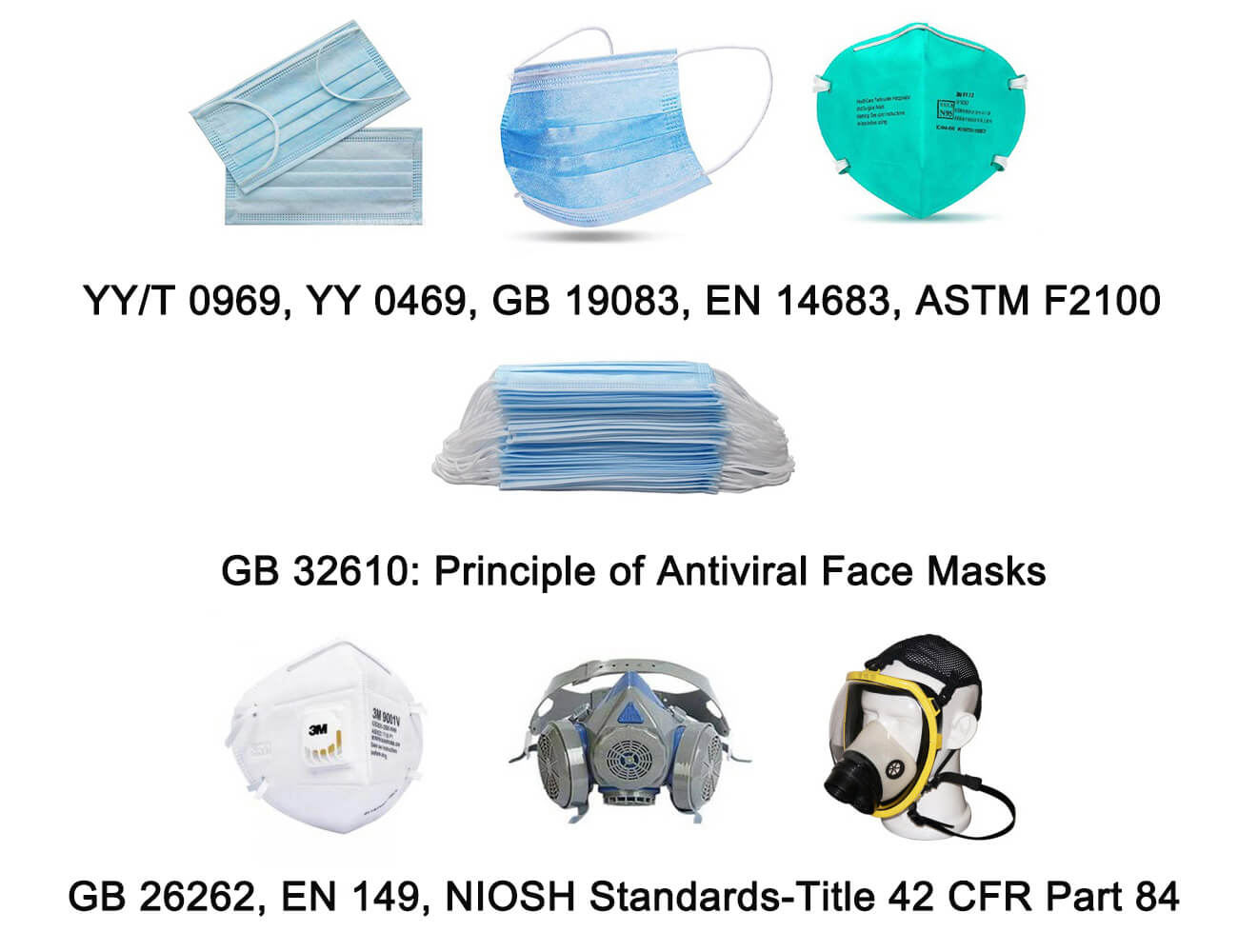
In view of the nature of the COVID-19, we have consulted a lot of information and data, as well as relevant professionals, but in a rigorous and open-minded manner, we hope that you can think independently when reading this kind of popular literature.
Table of Contents
1 What are the transmission modes of the 2019-nCoV? How did it happen? How to respond?
| Dissemination | Dissemination Scenario | Response |
| Droplet spread, the main mode of transmission | Virus carriers in the process of breathing, sneezing, coughing or talking, may spread the virus in the air, if there has been close contact with it, such as the same car, eat at the same table, live together or in the same place of entertainment, etc., there is a high probability that in the process of breathing the virus in the air into the body, thus causing infection. | Whether you are outdoors, on public transport, on the metro, in supermarkets, in shops, in offices… Whenever someone comes within 2 meters of you, you have to wear an antiviral face mask. |
| Contact spread, the main mode of communication | The virus can survive for a long time on smooth surfaces. When we go out, we inevitably come into contact with public facilities such as elevator buttons, bus handrails, and other amenities. Touching one’s mouth, nose, or eyes after touching something that the infected person has touched causes the virus to spread. | Make it a habit to wash your hands regularly, disinfect them regularly, and do not touch your mouth, nose, or eyes with your hands to prevent the spread of contact. |
| Aerosol transmission in confined places with concentrated disease. | Infections caused by high concentrations of aerosols produced by multiple patients that do not spread out in confined spaces. It is often found in places where patients are concentrated. | Wear an antiviral face mask, ventilate often, wear goggles, and don’t go to places where there is a high concentration of patients. |
The COVID-19 is a respiratory infection with an incubation period of about 14 days, and even during the incubation period, the virus can be transmitted. Therefore, during an epidemic, wearing an antiviral face mask and washing your hands diligently are the most basic means of protection in order not to infect others, as well as in order not to be infected by others.
2 What is the principle of antiviral face mask? What kind of mask material is antiviral?
In the natural environment, the 2019-nCoV cannot exist independently and spread mainly by attaching themselves to various particulate matter. Therefore, it is not the virus itself that is filtered by the antiviral face mask, but the various particles to which the virus adheres, with the 2019-nCoV adhering mainly to droplets and secretions.
There are many fabrics for filtering particulate matter, the most effective being meltblown nonwoven. People charge a meltblown nonwoven and let it carry a large amount of charge to get an electrostatic meltblown nonwoven that can effectively filter viruses. As shown in the figure, the gap ratio of meltblown nonwoven can reach 75% and the fiber gap can reach 10um.
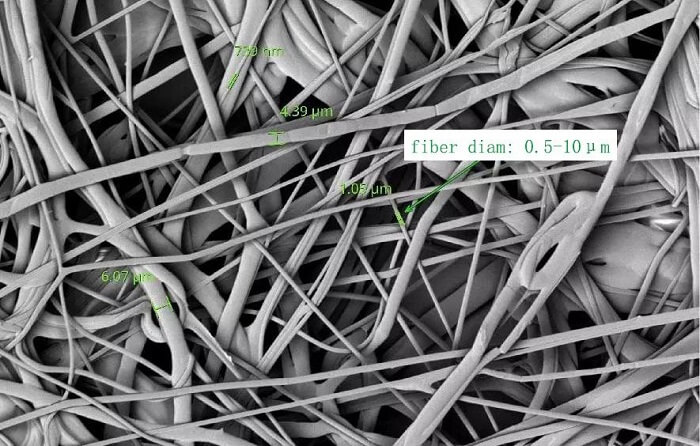 Electron microscopy of the fibrous structure of the meltblown nonwoven
Electron microscopy of the fibrous structure of the meltblown nonwoven
The void of meltblown nonwoven is so many and so large, and the diameter of the particulate matter attached to the virus is 0.5μm~5μm, so how does it filter the particulate matter? The meltblown nonwoven mainly filter viruses by two physical actions: “mechanical filtration and electrostatic adsorption”. Depending on the size of the droplet particles and the velocity of the airflow, the fibers can capture virus-containing droplets by several mechanisms.
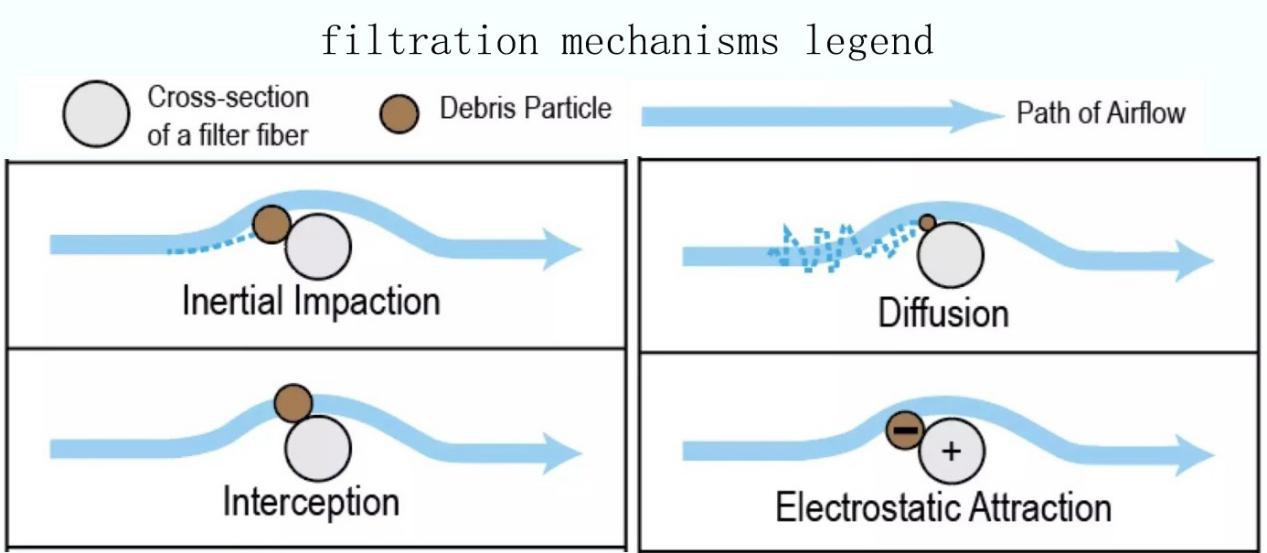
It is the fluffy structure and electrostatic adsorption of electrostatic meltblown nonwoven, which can ensure the comfort of breathing and avoid lung damage, but also effectively filter particles and prevent viral infection. When you buy an antiviral face mask, you should buy a mask that contains electrostatic meltblown nonwoven.
3 How is the electrostatic meltblown nonwoven produced? How to identify its filtration performance?
3.1 The meltblown nonwoven production process is shown below
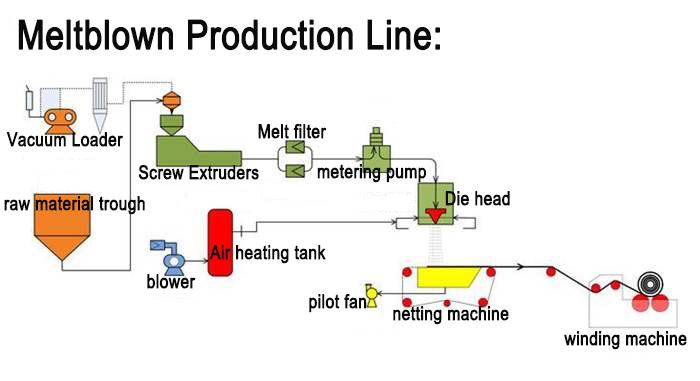
The disposable antiviral face masks are divided into 3 layers, the outer and inner layers are spunbonded nonwoven and the middle layer is meltblown fabric. Neither spunbond nonwovens nor meltblown nonwoven is made of cotton, but plastic fiber polypropylene (PP). After the outbreak of the COVID-19, the price of electrostatic meltblown nonwoven is also skyrocketing, from the previous one ton of $6,000, up to one ton of $60,000.
The physical diagram looks like this
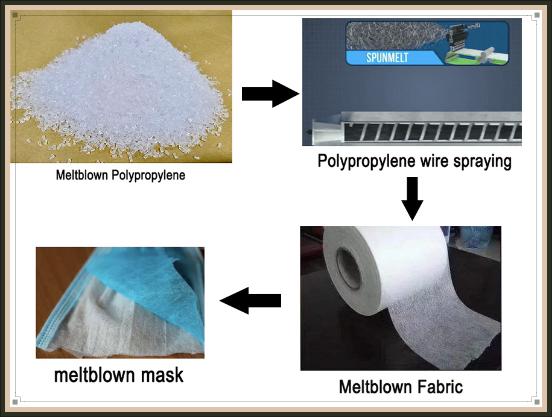
In fact, the most difficult part of the meltblown nonwoven manufacturing process is the machinery used to make it. In an interview with NPR, Markus Müller, sales director of Reicol, a German supplier of meltblown machines, said that in order to ensure that the fibers are fine enough and the quality is consistent, meltblown machines need to be very precise and not well made, and that a machine can take at least five to six months to produce and assemble, and can cost up to $4 million per machine, while many machines on the market are not of the same quality level.
3.2 Electrostatic treatment
The filtration efficiency of the meltblown nonwoven itself is only about 25%, so where does the 95% filtration efficiency of the face mask come from? This is to talk about the meltblown nonwoven manufacturing process is a critical step – electrostatic discharge treatment. In industry (e.g. factory chimneys), in order to filter very small particles, engineers use an electric field to charge the particles and then use a grid to suck them in.

Inspired by this technology, a method was invented to charge plastic fibers by ionizing air and electrostatically charging meltblown nonwoven, turning it into an electret, a permanently charged material, similar to an electric eel.
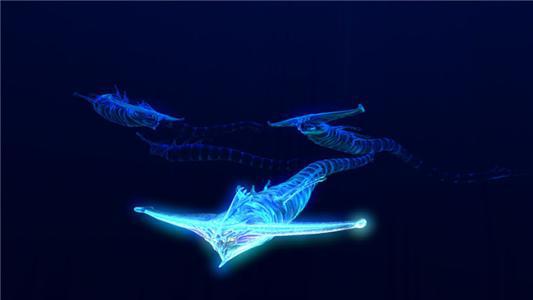
After the meltblown nonwoven is electrostatic, the filtration performance of 1 layer of melt spray cloth with static electricity is better than that of 10 layers of non-electrically, which can effectively filter a variety of tiny particles, such as the 2019-nCoV.
3.3 How to identify the antiviral face masks made of electrostatic meltblown nonwoven?
Disposable antiviral face masks are generally three layers, the outer and inner layers of nonwoven fabric do not have the effect of filtering microorganisms, they can only block droplets, only the middle layer of meltblown nonwoven has the effect of filtering germs.
China’s annual production of masks accounts for about 50% of the world, is the largest producer and exporter of masks, but according to the dates of China Industrial Textile Industry Association, China’s meltblown nonwoven production of less than 100,000 tons/year, meltblown nonwoven fabric gap is very large. Considering the price of meltblown manufacturing machine and machine delivery times, it is unlikely that small businesses will be able to produce large quantities of qualified meltblown cotton in a short period of time.
So how do we tell if the mask we buy is qualified and made of meltblown nonwoven?
3.3.1 Find a laboratory to test the performance of the mask directly with professional testing equipment
A professional lab, while accurate, is not for everyone, so I teach a few common tests.
3.3.2 Manual testing by yourself
First of all, because the outer layer spunbond nonwoven of the 3-layer mask is waterproof, qualified antiviral face masks should be waterproof, not waterproof, how to filter the droplets of oral spray? You can try it by pouring a little water like this brother did.
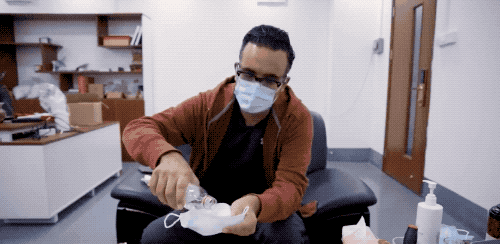 Secondly, polypropylene does not catch fire easily, but melts easily when heated, so meltblown nonwoven will not burn. If baked with a lighter, the melt spray cotton will roll up and ripple off, but it won’t catch fire.
Secondly, polypropylene does not catch fire easily, but melts easily when heated, so meltblown nonwoven will not burn. If baked with a lighter, the melt spray cotton will roll up and ripple off, but it won’t catch fire.
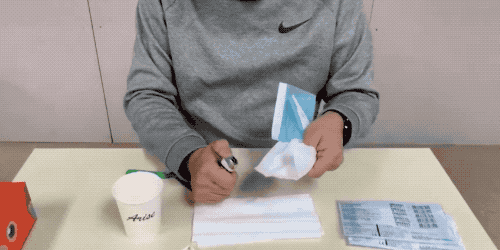 In other words, if the middle layer of the mask you buy is toasted with a lighter and catches fire, it’s a proper fake.
In other words, if the middle layer of the mask you buy is toasted with a lighter and catches fire, it’s a proper fake.
Again, the antivirus mask meltblown nonwoven has static electricity and can be applied to a smooth stainless steel surface or can pick up small pieces of paper.
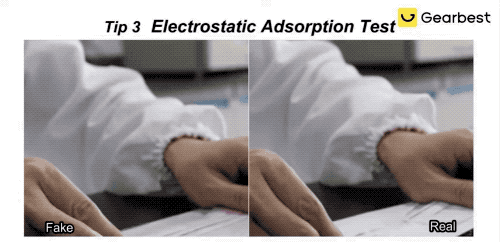 In addition, the electrostatic electropole effect of meltblown nonwoven is very stable, if you need to use the same antivirus mask several times, you can use 70℃ hot air to disinfect the mask for 30 minutes, will not affect the electropole properties of the mask. However, alcohol will take the charge away from the meltblown nonwoven, so don’t sterilize the mask with alcohol. By the way, since meltblown cotton has strong absorption barrier filtration and leakage prevention skills, many women’s products and diapers are also made of it, you can use these instead if you really cannot buy an antiviral face mask.
In addition, the electrostatic electropole effect of meltblown nonwoven is very stable, if you need to use the same antivirus mask several times, you can use 70℃ hot air to disinfect the mask for 30 minutes, will not affect the electropole properties of the mask. However, alcohol will take the charge away from the meltblown nonwoven, so don’t sterilize the mask with alcohol. By the way, since meltblown cotton has strong absorption barrier filtration and leakage prevention skills, many women’s products and diapers are also made of it, you can use these instead if you really cannot buy an antiviral face mask.
However, in the face of so many kinds of masks on the market, how exactly should we choose? This article is a collection of filter performance analysis of 9 standard masks currently available in various countries, and it may answer your doubts.
Mask making machine supplier: antiviral face mask machine
Disposable antiviral face masks supplier: wholesale antiviral face masks

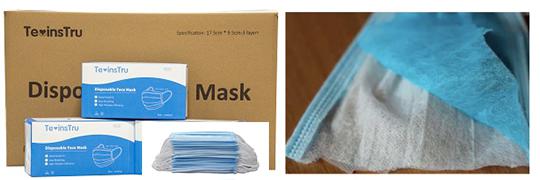
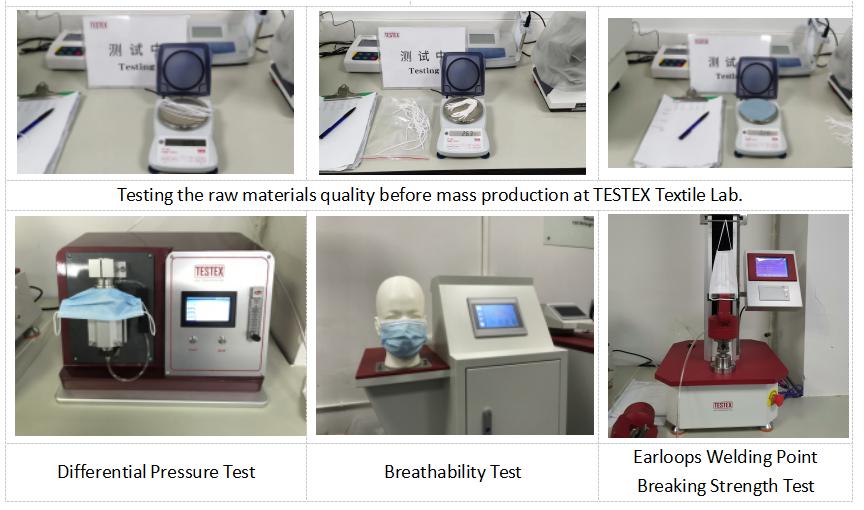

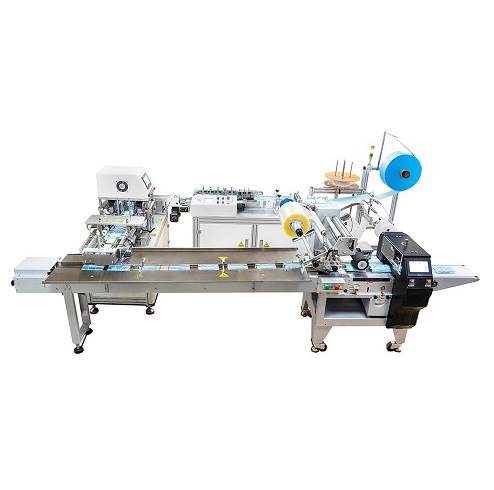

This Post Has 0 Comments